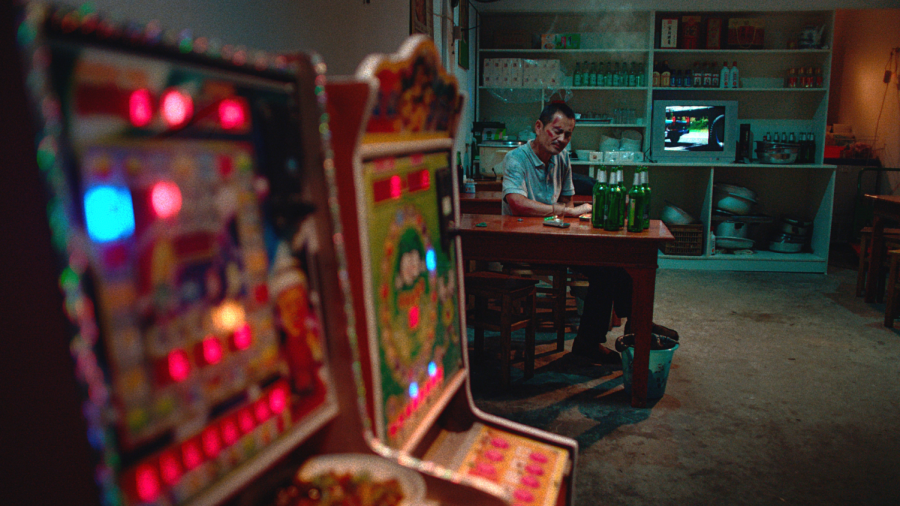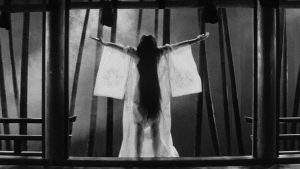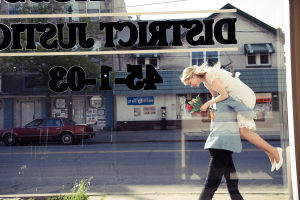Theme of the Month: Man vs. Society
May 6, 2019
Theme of the Month is an article series designed to investigate examples of film, television, and writing that fall under a certain category. The following works feature conflict between an individual and the collective surrounding them.
“Old Stone”
The feature directorial debut of Chinese filmmaker Johnny Ma, “Old Stone” is an urban fable examining issues of selflessness, selfishness, and corruption in a society that doesn’t appeal to the individual.
Lao Shi is a capstone example of the troubled “family man.” He holds a job driving taxis that barely pays for basic necessities, co-runs a homemade daycare with his wife, and tries to support his going-through-the-motions daughter.
When a drunken passenger causes him to swerve his vehicle and hit a bicyclist, Lao stays at the scene and, when paramedics fail to arrive on time, carries the unconscious man to the hospital. The medical bills fall on Lao, adding to his already-stressful financial situation. (He’s later told, in a cruel twist of irony, that things would be much easier if he left the man to die.) As his life continues to spiral into disaster, Lao decides to take action.
The movie was shot on film, evidenced by a heavy layer of grain over the image (if not that, then it was edited in post-production). Colors are alternatively vibrant and dull; pinkish hues give objects like arcade machines a lush appearance, while the cityscape around the characters is constantly stark and gray. Red dominates the most important scenes in the film: neon street signs illuminate Lao’s face when his morality begins to sway and the end of the movie fades to red as opposed to the standard black.
“Old Stone’s” social messages are blunt but effective and are topical for those in and outside of its country of origin. Some have criticized the ending as being too melodramatic, and while such things may not consistently happen in real life, it works as a powerful ending to a powerful film.
“Falling Down”
“I’m the bad guy…?”
Armed with a plot that would never be made today, “Falling Down” is a scathing, and unfortunately close-to-home, take on one person’s total separation from his fellow men.
William “D-FENS” Foster, played by a detached Michael Douglas, is driving his way to work one day. Well, “driving” may not be entirely accurate, since he’s stuck in traffic and there is no sign of his car moving anytime soon. In a series of rapid cuts, the viewer is shown what is grating Foster down to the bone: broken air conditioning, a school bus full of screaming kids, and (inexplicably) a Garfield plushie. He abandons his vehicle, walks off of the highway, and begins a violent city-wide journey to his ex-wife’s house in time for his daughter’s birthday.
Foster’s foil is Detective Prendergast, a dedicated cop one day before retirement, who mirrors him in many ways. Both have strained relationships with their wives and have strong senses of duty towards their country, though the ways they handle conflict wildly vary. Some viewers have pointed out that Foster cannot handle stress while Prendergast is relatively laid back — which, in this world, can be the difference between sanity and fury.
Dark humor is infused into some of the more ridiculous scenarios, such as when a drive-by shooting results in property damage and bystander injuries, though the intended target is left untouched. By disguising itself as an off-kilter drama, “Falling Down” hides its messages in plain sight while not forcing them down your throat.
“99 Homes”
Much like Lao Shi from “Old Stone,” the main character of “99 Homes” (portrayed by Andrew Garfield) is an everyman struggling with financial issues. To make matters worse, his home has been foreclosed upon and he has to climb his way up real estate operator Rick Carver’s social ladder: the same man responsible for his eviction in the first place.
Michael Shannon injects a sense of moral ambiguity into Carver that would be lost on a less experienced actor. He’s ruthless and tears families apart for no good reason, but has struggled financially himself and carries his own skewed set of morals.
The battle of ideals is represented by various differences in ways the two leads act; Nash smokes regular cigarettes, while Carver takes electric ones. Nash uses his hands to build houses; Carver uses the law to claim them as the bank’s.
As a result of this, the conflict in “99 Homes” could easily fall into the “man vs. man” category, though it doesn’t feel like it. Nash is a tangible person — some time is given to his relationships with his mother and son — and Carver is more of an idea. He is backed by a rigged system that feasts on the unfortunate, and all he does is harness that injustice.
Unfortunately, Hollywood may look past its critical acclaim; “99 Homes” earned only $1.9 million at the box office, not even a fourth of its estimated budget.
Despite being a box office failure (it earned only a fourth of its estimated budget), “99 Homes” remains engaging and relevant: traits that turn a good film into one that cannot be missed.






